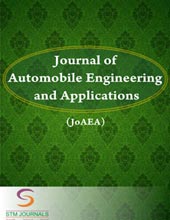
Shilpa Gadakh,

Shivaraj Subhash Taware,
- Assistant Professor Department, Sinhgad Academy of Engineering, Kondhwa, Pune Maharashtra India
- Student Department, Sinhgad Academy of Engineering, Kondhwa, Pune Maharashtra India
Abstract
The population has increased dramatically as a result of urbanization and industrialization, which has also increased the diversity of cars on the road. The biggest obstacles for emergency vehicles, such as ambulances transporting critical patients, are the resulting traffic jams and congestion. These vehicles are unable to arrive at their destination in time, which results in the loss of life. We propose the SSTCS (Siren Swift Traffic Control System) as a solution to lessen this. The idea behind this plan is to minimize the delays brought on by traffic congestion by ensuring a fluid flow for emergency vehicles, such as ambulances, to reach hospitals on time. The current state of traffic congestion can be resolved with the use of this SSTCS combined with software. This totally automated system helps to minimize travel time to the hospital by locating the accident scene, managing traffic signals, and finding the location. During emergencies, this device saves time by controlling the traffic signals. With this, our patient may schedule an ambulance and hospital for when things go serious.
Keywords: Traffic, Ambulance, Emergency services, patient, hospital.
[This article belongs to Journal of Automobile Engineering and Applications(joaea)]
References
- Sarika B. Kale, Gajanan P. Dhok “International Journal of Innovative Technology and Exploring Engineering” (IJITEE), Volume-2, Issue-5, April 2013.
- Sangeetha, P. Archana, M. Ramya, P. Ramya “IOSR Journal of Engineering”
(IOSRJEN) www.iosrjen.org ISSN. Vol. 04, Issue 02, February 2014
- IPASJ International Journal of Electronics & Communication (IIJEC), Volume 2, Issue
7, July 2014.
- Jose Anand and T. G. Arul Flora, “Emergency Traffic Management for Ambulance using Wireless Communication”, Volume 2, Issue 7, July 2014.
- Himadri Nath Saha; Neha Firdaush Raun; Maitrayee Saha, “Monitoring patient’s health with smart ambulance system using Internet of Things (IOTs)” 2017.
- Gargi Beri1, Ashwin Channawar2, Pankaj Ganjare3, Amruta Gate4, Prof. Vijay Gaikwad 5 “Intelligent Ambulance with Traffic Control”, Volume 02 – Issue 05, May 2016.
- Deepali Ahir1, Saurabh Bharade2, Pradnya Botre3, Sayali Nagane4, Mihir Shah5 “International Research Journal of Engineering and Technology” (IRJET): Volume: 05 Issue: 06 , June-2018.
- Marshima Mohd Rosli, “Review of traffic control techniques for emergency vehicles”. No.13, No. 3, March 2019.
- Sabeen Javaid, Ali Sufian, Saima Pervaiz, Mehak Tanveer “Survey on Smart Ambulance with Traffic Management”, Volume: 0 6 Issue: 12, Dec 2019.
- Shruthi U1, Sindhu N1, Supriya R Aithal1, Swati Shripad Bhat1, Bhavani K2, “IOT Based Smart Ambulance System,” Volume: 06 Issue: 07 | July 2019
- Tugay Akca; Ozgur Koray Sahingoz; Emre Kocyigit; Mucahid Tozal “Intelligent Ambulance Management System in Smart Cities”, Sept-2020.
- Omkar Udawant; Nikhil Thombare; Devanand Chauhan; Akash Hadke; Dattatray Waghole “Smart ambulance system using IoT,” 2017.

Journal of Automobile Engineering and Applications
| Volume | 11 |
| Issue | 02 |
| Received | June 27, 2024 |
| Accepted | July 3, 2024 |
| Published | July 17, 2024 |

